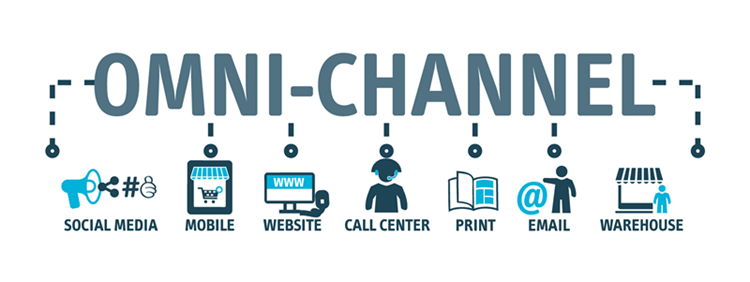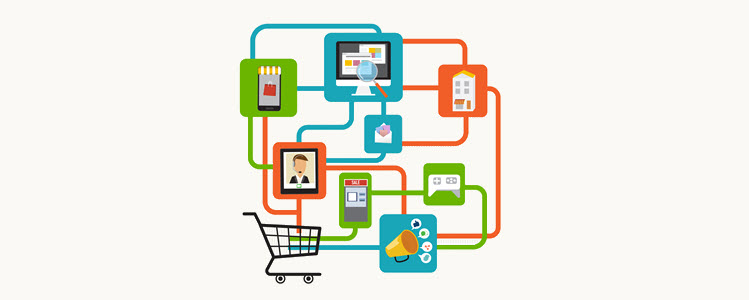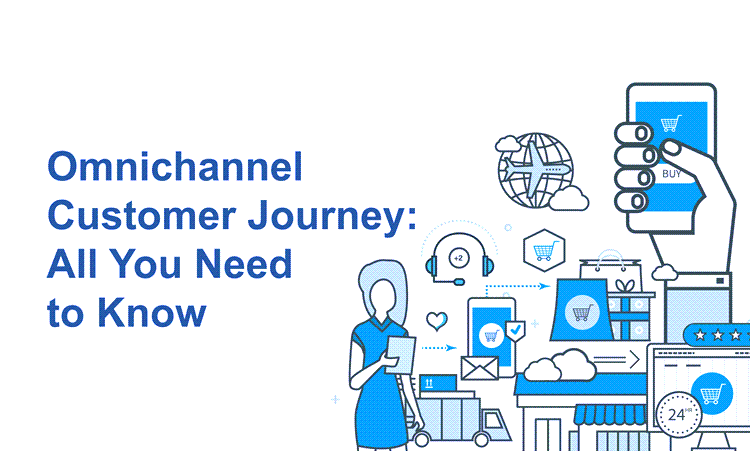The success of every business relies on a quality product or service, promoted through well-designed marketing strategies. In the digital age, however, success also increasingly depends on the customer experience. The level of satisfaction a customer has with a brand depends on how easy they switch from one point of interaction to another.
A customer journey is a representation of all the interaction points a buyer has with a business. Understanding and mapping all the touchpoints between the brand and the customer helps merchants create personalized offers, provide responsive customer service, and leave the buyer with an overall feeling of satisfaction. These efforts result in reduced churn and the creation of repeat customers.
This article explains how an omnichannel approach impacts a customer journey and offers a guide to creating an omnichannel customer journey map.
How Does an Omnichannel Customer Journey Work?

An omnichannel customer journey allows the customer to interact with a brand through multiple, interrelated channels. Unlike single or multi-channel journeys, an omnichannel customer journey is not a straight line, but a web of interconnected touchpoints.
If a person sees your advertisement on a billboard and becomes interested, they might want to learn more about it. An omnichannel customer journey provides just that. For example, the advertisement could contain a huge QR code that links to your website or mobile app. Alternatively, the same can be applied on Instagram or another social media platform. With multiple channels leading to your brand, the customer chooses a preferred path to complete their purchase.
The best choice of channels for your business will depend on your business model and the products and services provided. You can choose to be present in all sales/marketing channels or opt for those channels your target audience prefers.
Whichever channels are used to reach the target audience, the transitions from one touchpoint to the next should be as seamless as possible. This is the essence of the omnichannel approach.
Omnichannel Customer Journey Map: What Is It and How to Create One?
To ensure the success of an omnichannel customer journey, brands must create a visual representation of all the touchpoints between them and their customers. This is also known as a customer journey map.
Creating a customer journey map consists of several steps, outlined below.
Step 1: Analyze Your Buyer Persona

Customer journeys should be designed with a brand’s buyer persona in mind. This means understanding:
- The intent of your ideal customer. What does your customer want to do at different customer journey touchpoints, and how can you help them? Is your customer only getting acquainted with your brand, or are they familiar with your product range and wish to make a purchase?
- The final goal of your ideal customer. The final goal of your ideal customer is to alleviate their pain point. Can your products or services help them do that? How would you address a customer’s pain point in a way that makes them feel understood and that will convince them to make a purchase?
- The feelings the customer journey raises in your customer. How does a customer feel during the journey? Track how many touchpoints a customer needs to complete a purchase. Too many touchpoints mean that the customer journey is tiring and confusing. On the other hand, a low number of touchpoints indicates that the customer loses interest in buying from your brand at some point during the journey.
Step 2: Map Customer Touchpoints
Mapping customer touchpoints means identifying how customers interact with your brand throughout the customer journey.
Touchpoints are typically divided into the following three categories.
Before the Purchase

Touchpoints before the purchase typically include:
- Advertisements (television, radio, online, billboards, posters, etc.)
- Word of mouth
- Physical stores
- Content marketing
- Online presence (websites, social media profiles)
- Promotional activities (fairs, seminars, webinars)
Analyze where a potential customer first learns about the brand. Consider whether you reaching out to them or are you waiting for them to come to you?
During the Purchase

Touchpoints during a purchase include physical stores (POS system) or ecommerce shops (online purchase).
Place yourself in the role of a customer and assess the ease with which they can make a purchase. Is the process straightforward or does it require many steps? In the case of online shopping, does the customer feel secure in providing their payment details? Is the payment user friendly?
Note: Whether you own a brick-and-mortar store or an online business, customers today expect to be able to make secure online payments with ease to complete their purchase. This means that merchants need to provide different payment options.
After the Purchase

Touchpoints after the purchase typically include:
- Surveys
- Forums
- Newsletters
- Loyalty programs
Delivering the goods or services should not mean the end of the customer journey. Examine whether and how customers interact with the brand after the purchase. Post-purchase communication with your customer builds trust, reduces chargebacks and creates recurring customers.
Step 3: Define Customer Actions
Customer actions are the steps customers take to achieve their goal. Customer goals include getting the information they need and making a purchase or taking other action based on that information.
Examples of customer actions in an ecommerce shop include:
- Performing a product search
- Reading product pages
- Adding a product to their cart
- Reviewing their cart
- Completing the checkout form
- Confirming their payment
- Contacting customer support (via email, phone call, online form, etc.)
Customers don’t have time to look for CTAs and fine-printed information or fill out confusing forms. Ensure that all customer actions are simple to complete.
Step 4: Identify Customer Pain Points
Customer pain points are issues the customer faces and wants to solve with the best product for that purpose.
Pain points can be general or product-specific.
Examples of general pain points are:
- Poor price-quality ratio. A common way customers decide on a purchase is the product’s price-quality ratio. Customers don’t find value in expensive products of poor quality.
- Poor customer service. Customers are more likely to buy from your brand and even spend more than they intended if the customer service is outstanding. Likewise, your products will not sell despite their amazing quality if your customers are not receiving the service they expect.
- Long or malfunctioning checkout processes. People shop online to avoid long waiting lines in stores and enjoy a quick checkout process. Any hiccups in your shop's payment processing system will discourage customers from buying from you.
- Long shipping times and excessive costs. The purpose of online shopping is quick and efficient service. Customers expect their products to arrive as soon as possible. When faced with long shipping times, the customer feels more inclined to use that time to visit a physical shop or order from a brand with faster shipping.
- Poor channel integration. The essence and purpose of omnichannel commerce are seamless transitions between sales channels. When a page redirect fails or a checkout form malfunctions, customers abandon their carts and look for products that meet their needs elsewhere.
How to Optimize an Omnichannel Customer Journey

Now that you know how to create an omnichannel customer journey map, work on improving the journey itself.
Optimizing a single or multi-channel customer journey is straightforward because customers use a single channel at a time to interact with a brand. An omnichannel approach makes the matter more complex because all the channels are interconnected.
Changes applied to one touchpoint reflect to all touchpoints, not only the ones that come next. This is because a customer journey isn’t necessarily a straight line. Different customers have different motivators for shopping. Some are more impulsive buyers and don’t spend much time on product research. Others take their time and wander across channels, returning to previous stages and looking for proof that the decision they make is the best one.
Optimizing an omnichannel customer journey takes effort, analysis, and consideration. The process consists of several steps.
Step 1: Collect Feedback from Existing Customers
Collecting feedback from your customers ensures that the best features of the customer journey are identified and kept while providing valuable insight into what can be improved.
Here are some ways to collect customer feedback:
- Ask for feedback. Ask customers to test a touchpoint (e.g., your new website, online store, or app) and provide feedback. You can motivate them to do this with rewards, such as freebies, discounts, store credits, or free shipping.
- Create surveys. Surveys can be as simple as five-star rating scales, or as complex as multiple-page forms. Keep in mind that customers will not spend a lot of time providing feedback unless they are motivated by rewards.
- Analyze website session replays. Session replays show what an average visit to your website looks like from a visitor's perspective. Analyze what grabs your visitors’ attention and which parts they skim over and make improvements accordingly.
- Analyze live chat data. Live chat data provides valuable insight into what your customers are struggling with, be it performing basic tasks in your online shop or requesting post-purchase services.
- Monitor social media channels. Social media analytics track user activity and transform it into structured data, allowing you to identify touchpoints your buyer persona prefers. Social media platforms are also a source of unsolicited feedback that can help you understand what kind of impression your brand leaves on your audience.
Step 2: Analyze Relevant KPIs
The exact KPIs to analyze depend on the channels the business has established. The following indicators belong to the group of essential KPIs every ecommerce merchant should monitor. Data collected in this way helps locate issues in the omnichannel customer journey.
Cart Abandonment Rate
The average cart abandonment rate for ecommerce shops is 70%.
When dealing with a high cart abandonment rate and taking steps to implement cart abandonment solutions, take a closer look at the sales points the customers interact with. The most common reasons for cart abandonment are card declines, unexpected fees (for example, extra shipping costs), or errors within the website or checkout process.
Conversion Rate
Conversion rates reflect the brand’s ability to encourage customers to take action, which could be anything from signing up for a newsletter to buying a product.
Low conversion rates indicate problems with touchpoints before a purchase, which are typically connected to marketing, and in some cases, with the product development or acquisition department. This means that customers aren’t drawn to your products because they are either inadequately advertised or don’t perform as expected, leading to a negative word-of-mouth reputation.
Customer Lifetime Value
Customer lifetime value (CLV) shows how much revenue a business can expect from an average customer.
Note: Check out our post on the most important payment processing KPIs you need to follow.
Step 3: Test the Customer Journey
The best way to improve a customer journey is to test it. Assume the role of a customer, try different channels and see how they make you feel. That way, you better understand both the positive and the frustrating points customers interact with. Identify redundancies and opportunities to simplify the process.
Another way to test the customer journey is to hire software quality assurance analysts. QAs inspect all digital touchpoints for errors, and, if they find any, escalate them to the right department.
Conclusion
Omnichannel customer journeys allow businesses to learn more about their customers' needs and develop ways to meet them. Establishing a presence across multiple channels is not only a trend but a necessity that customers expect.
Now that you are acquainted with what an omnichannel customer journey is and how it works, use it to improve your customer experience.
